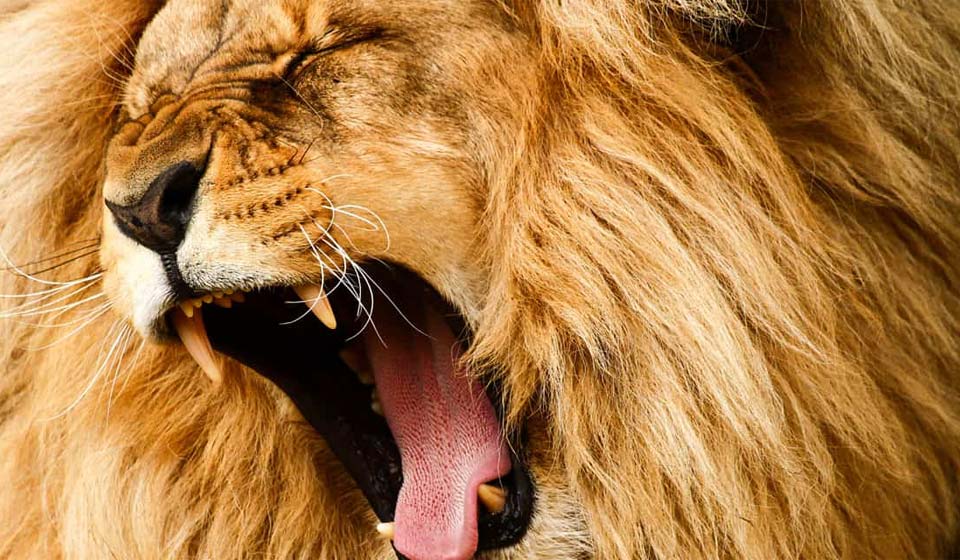We’ve listed the animals with the best hearing, and how the human hearing range compares to other animals.
Now it’s time for the top 10 loudest animals! A human feels physical pain when they are exposed to sounds of 120 dB or more, so these animals are best avoided if you want to protect your hearing!
Lions
A lion’s roar is iconic – just think of Leo the Lion and the famous MGM opening credits. A lion’s roar can be heard up to 5 miles (8 km) away and can reach 114 dB (from a metre away). A lion will use its roar to establish dominance and territory over other lions.
Hyenas
Despite the noise they make, hyenas are no laughing matter. These ruthless scavengers have been known to even kill lions. The whooping sounds they produce while hunting can be as loud as 112 dB!
Wolves
The most famous howl in the animal kingdom comes from the grey wolf. Between 90 and 115 dB and, in certain conditions, able to cover 50 square miles (80 square km), the grey wolf’s howl is remarkable. Similarly to lions, a wolf will howl to establish their territory and to communicate with other wolves.
Elephants
Not only do they have some of the biggest ears and best hearing in the animal kingdom, they’re also one of the loudest! As well as their trumpeting sounds, elephants can also emit infrasonic sounds that can travel for an impressive 6 miles (9.6 km) in ideal weather conditions. The frequency cannot be heard by humans, since it’s too low, but can reach as loud as 117 dB!
Howler monkeys
Another animal famous for their howling, the howler monkey! With their howls reaching up to 140 dB according to Los Angeles zoo, reaching up to 3 miles (4.8 km), it’s no wonder these noisy monkeys have made our top ten! The howler monkey is a particularly social creature, communicating with other animals and members of their group with a variety of different sounds.
Kakapos
These birds are part the parrot family and are flightless, nocturnal and the heaviest parrots (weighing in at 2-4 kg). They are the loudest birds in the world and they can live up to 90 years. The male’s mating call can travel up to 7 km and can reach up to 137 dB!
Green grocer cicadas
The loudest insect in the world! Using their singing voices to attract mates, the green grocer cicada can produce sounds that are in excess of 120 dB. These sounds can travel up to a mile. The insect uses a drum in their stomach along with the contraction of their internal muscles to produce the sounds. When the insects group together, they can confuse birds with their mating song.
Bulldog Bats
Bats use ultrasonic echolocation to navigate and hunt. They emit sound, and use the vibrations of it bouncing back to paint a sound map of their surroundings. The loudest member of the bat family, the bulldog bat can produce sounds exceeding 140 dB, although these sounds are out of our hearing range.
Tiger pistol shrimp
Native to the sunny Mediterranean, the tiger pistol shrimp is among the loudest of the animal kingdom. They can produce sounds up to 200 dB – louder than a gunshot! When hunting, a tiger pistol shrimp has a large claw that they snap, firing a bubble at speeds of up to 60 mph (96 kmh) to stun their prey.
Whales
Whales like to sing and whistle to communicate. A whale’s call (the blue whale, in particular) can reach up to 188 dB and can travel up to 500 miles (880 km)! The sounds they produce are louder than a jet engine and are a lot louder than a human ear would be able tolerate. The loudest species of whale is the sperm whale, whose clicking sounds can reach 230 dB! Although these clicks only last a little over 10 milliseconds, they can use them to detect prey, like a foot-long squid, from a mile (1.6 km) away!
If you're worried about your hearing, book a free hearing test today.





